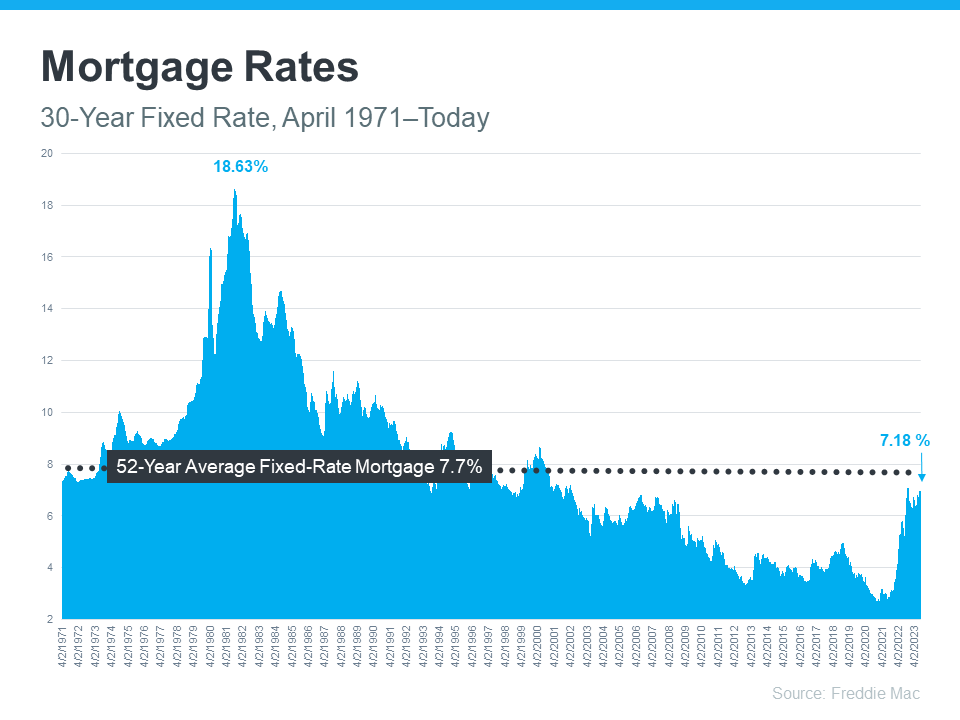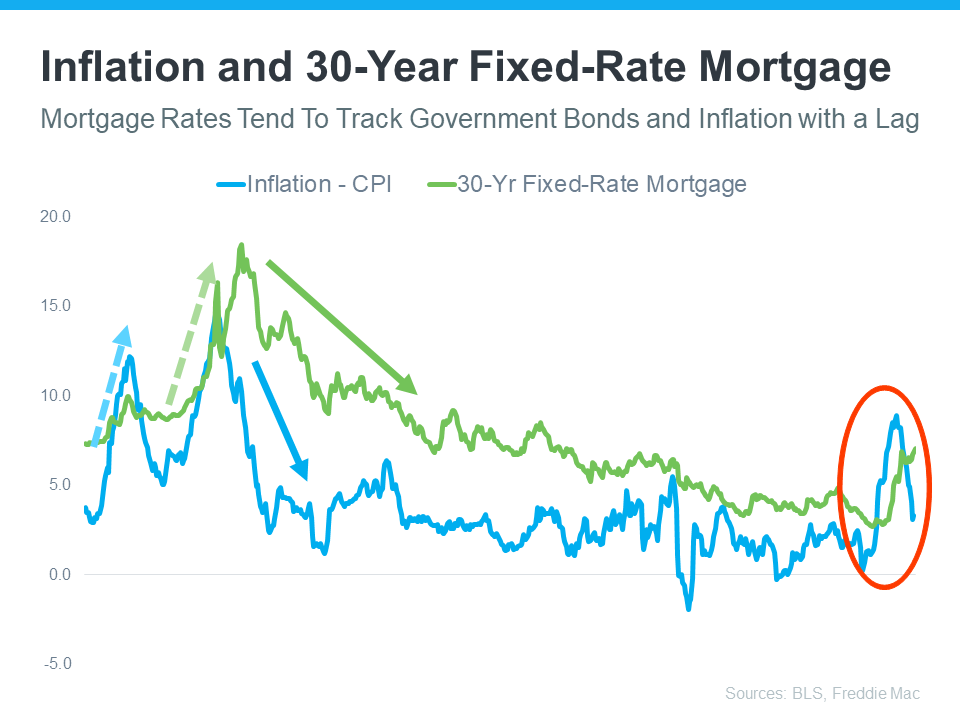MORTGAGE RATES: PAST, PRESENT, AND POSSIBLE FUTURE
INTEREST, MORTGAGE RATES AND HOUSING MARKET UPDATES
If you’re hoping to buy a home this year, you’re probably paying close attention to mortgage rates. Since these impacts what you can afford when you take out a home loan – and affordability is a challenge today – it’s a good time to look at the big picture of where these rates have been historically compared to where these rates are now. Beyond that, it’s important to understand their relationship with inflation for insights into where they might go in the near future.
GIVING CONTEXT TO THE STICKER SHOCK
FREDDIE MAC’S HISTORICAL DATA
Freddie Mac has been tracking the 30-year fixed mortgage rate since April of 1971. Every week, they release the results of their Primary Mortgage Market Survey, which averages mortgage application data from lenders across the country (see graph below):

That’s important because it explains why the recent jump in rates might have you feeling sticker shock even though they’re close to their long-term average. While many buyers have adjusted to the elevated rates over the past year, a slightly lower rate would be a welcome sight. To determine if that’s a realistic possibility, it’s important to look at inflation.
WHERE COULD MORTGAGE RATES GO IN THE FUTURE?
THE INFLATION-MORTGAGE RATE CONNECTION
The Federal Reserve has been working hard to lower inflation since early 2022. That’s significant because, historically, there’s been a connection between inflation and these rates (see graph below)

Inflation and 30-Year Fixed-Rate Mortgage.
This graph shows a pretty reliable relationship between inflation and mortgage rates. Looking at the left side of the graph, each time inflation moves significantly (shown in blue), the rates follow suit shortly after (shown in green).
RECENT TRENDS
The circled portion of the graph points out the most recent spike in inflation, with these rates following closely behind. As inflation has moderated a bit this year, mortgage rates haven’t yet made a similar move.
That means, if history is any guide, the market is waiting for the rates to follow inflation and head back down. It’s impossible to accurately predict where they will go for sure, but moderating inflation means these rates going down in the near future would fit a well-established trend.
Bottom Line
To understand where mortgage rates may be going, it’s helpful to look at where they’ve been in the past. There’s a clear connection between inflation and these rates, and if that historical relationship holds true, the recent decline in inflation may mean good news for the future of these rates and your homeownership goals.
FAQS
1. Are mortgage rates the same for everyone?
- These can vary depending on factors such as your credit score, the type of loan you choose, and the lender you work with. So, they may not be the same for everyone.
2. Should I wait for mortgage rates to go down before buying a home?
- While waiting for lower rates can be tempting, it’s essential to consider your personal financial situation and housing market conditions. Consult with a financial advisor or real estate expert for guidance.
3. How often do mortgage rates change?
- These rates can change daily or even multiple times a day in response to economic factors and market conditions.
4. What is the Federal Reserve’s role in setting mortgage rates?
- The Federal Reserve influences short-term interest rates, which, in turn, can affect these rates indirectly. However, these rates are primarily influenced by the bond market and economic factors.
5. Are fixed-rate or adjustable-rate mortgages better in a changing rate environment?
- Fixed-rate mortgages offer stable payments throughout the loan term, making them a reliable choice in uncertain rate environments. Adjustable-rate mortgages may have lower initial rates but can increase over time, posing more risk if rates rise significantly. Your choice depends on your risk tolerance and financial goals.
